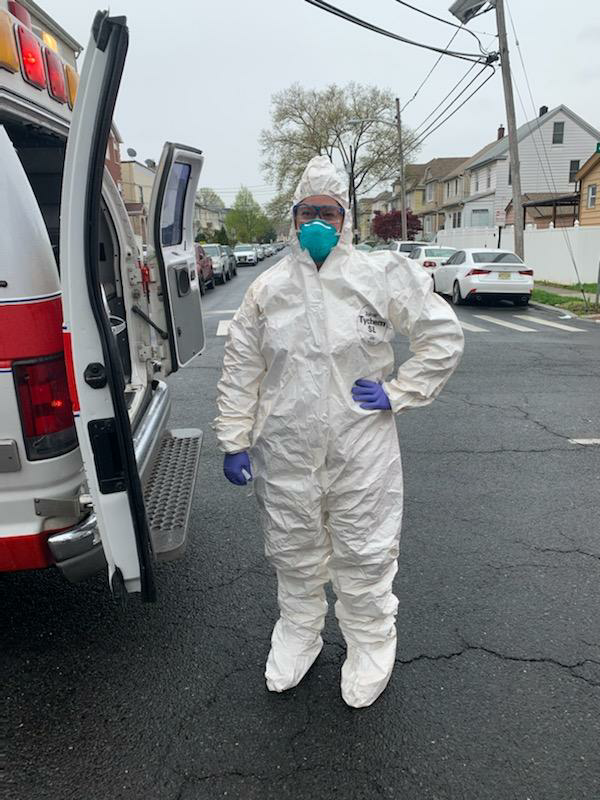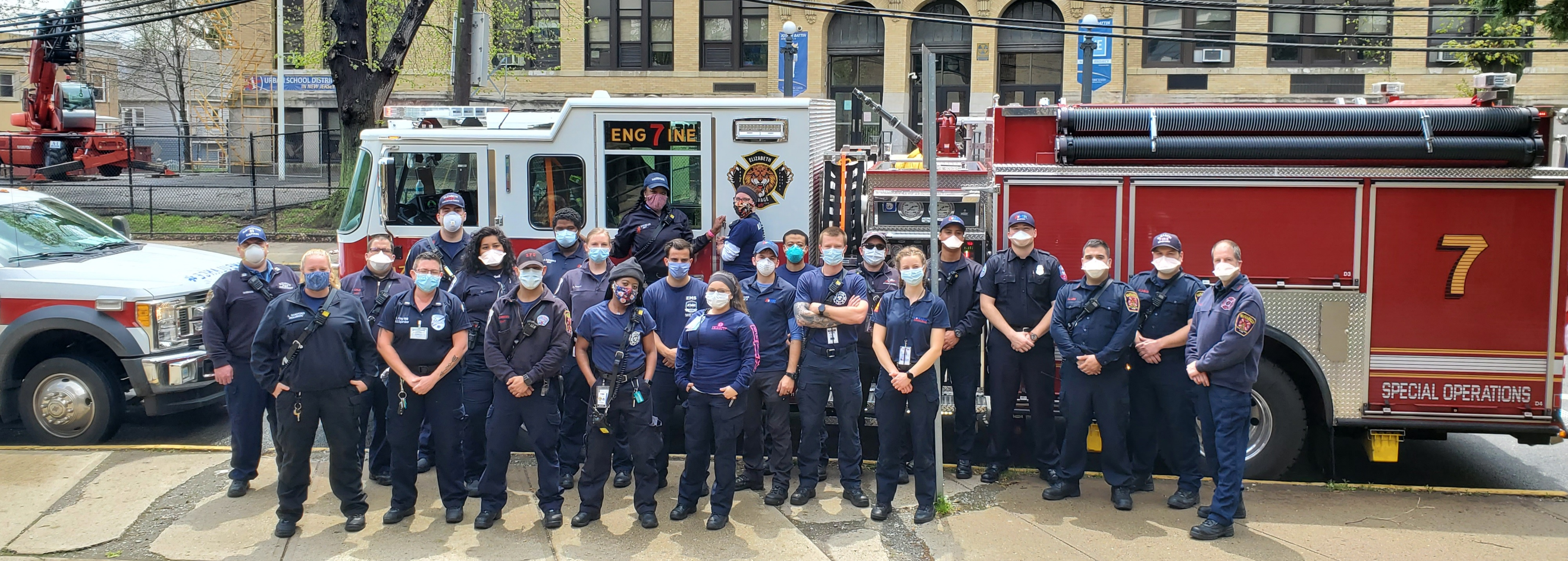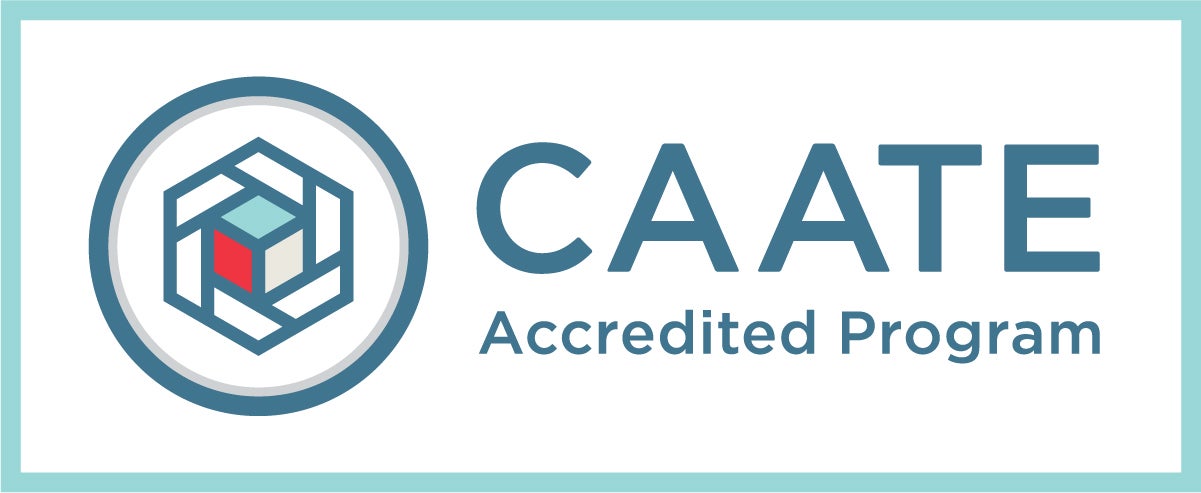
 Alumni Spotlight: Lisa Sandford
Alumni Spotlight: Lisa Sandford
Lisa Sandford, a 2010 alumna of our B.S. in Athletic Training program, has been serving on the frontlines of COVID-19 while working for FEMA as a paramedic in New York and New Jersey. This Q&A below details how Marshall University prepared her for a role like this, and how she’s handled the challenges of a global pandemic.
- What’s your age, hometown and current city of residence?
I am 31-years old, and I am from Martinsburg, West Virginia. I currently live in Charleston, SC.
2. How did Athletic Training prepare you to be an EMT?
Athletic Training prepared me so much for what I do now as a paramedic, the most important being how to do proper assessments of acute medical and traumatic patients. With years of clinical work and excellent professors, I learned how to assess, acutely diagnose based off my findings, and treat my patient proficiently under pressure. I gained the confidence to trust my skills and assessment and was able to carry this over to emergency pre-hospital care.
3. Where do you work now, and what are your responsibilities in that job?
Since leaving Marshall, I have worked as a paramedic in both Cabell County, WV, and Charleston County, SC, after deciding to move closer to family. I currently work for AMR (American Medical Response) as a paramedic, providing pre-hospital emergency care along with advanced inter-facility care in Charleston County, SC.
4. How did the FEMA opportunity come about, and what made you want to go?
The company for which I work, AMR, is contracted by FEMA, and it is the first line for providing hospital emergency care wherever needed across the world for disasters. When AMR gets the call from FEMA, the company seeks out volunteers from across the nation to respond. I saw the opportunity, knew I had the ability to help and decided I wanted to do just that – help.
5. Where exactly did you provide services, and what types of services did you provide?
I joined hundreds of EMTs and paramedics from across the nation and responded to 911 medical calls in some of the hardest hit areas for this COVID-19 pandemic. My first assigned area was Elizabeth, NJ. I was there for two weeks and then spent nine days in Queens, NY doing the same task of pre-hospital emergency care.
6. Describe your experience – what do you see, who did you help, etc.?
My experience was overwhelming. From both ends of the spectrum. First, the people I met and the bond I now share with other EMT/Medics from all over the nation is truly special. Our main task was not only to help the people in the communities, but to provide relief for the first responders that were physically and emotionally exhausted from working around the clock to provide care. These guys and girls we worked beside have lost some of their own people, family, and friends, and yet, still show up everyday, putting their health and safety at risk to help others. “We are all in this together” has a whole new meaning to me. More than anything, I was there for them. To give them a break of some sorts knowing they had us to help carry some of that work load, that they weren’t alone. On the other end of that spectrum is processing everything we saw and dealing with that appropriately. Everyday, I treat each patient to the best of my ability. You always have the patients best interest in heart, and that is providing them with medical care until they are able to be evaluated by a doctor. In pre-hospital care, unfortunately you seldom find out the outcome of a patient once you bring them to the emergency room, you simply have to hope for the best and move on to the next call. It was more difficult responding to calls where there was a true fear for people who had to go to the hospitals for normal emergencies. Things like cardiac chest pain, syncopal episodes or major injuries wouldn’t be a question on a normal day. Instead you are talking to patients who are more scared to transport to the hospital in fear of dying alone than they are of not getting the appropriate care and staying home. That was hard because all you can do is let them make an informed decision based off of risks associated with all possibilities. This is a unique time that patients going to a hospital in the middle of a pandemic has its own risks, along with not being able to have your loved ones with you during the scariest time of their life. It was heart wrenching, and it still is.
7. How does it feel to know you saved lives and worked on frontlines of COVID-19?
I’m doing a job I love doing. It has its times of unpleasantness, but most jobs do. The adrenaline rush of being presented with an unstable patient and then being able to, based off your own assessment, help or save someone is an amazing feeling. Being able to help comfort a patient during their emergency is always something you can look back on, knowing you made a positive difference. No matter where in the country I’m doing that job, it’s always an amazing feeling. Working on the frontlines of COVID19 beside my brothers and sisters in EMS meant being apart of something greater than just myself and I was happy to help.
8. Is there anything you’d want prospective students to know about Marshall, its athletic training program, or how it prepared you for what you do now?
Oh Marshall! I really love that school. The campus is beautiful, the community stands behind you and the staff really just want to see you achieve any goals you may have. Going to Marshall gives you a special bond with all current and past students. It’s a big enough school with that hometown feel. In SC, I still get so excited when I see someone wearing Marshall gear. “Go Herd!”


